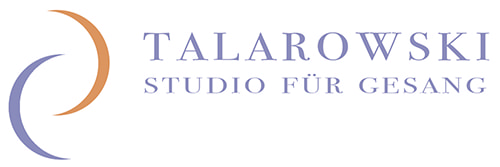„We can’t expect people to listen to us, unless we reach them!“ (Patsy Rodenburg)
Teaching the voice for a better understanding of presence. Its addressed to people in speech-intensive professions. It’s about working with the speaking voice in a healthy manner on a one-to-one basis.
Today we are talking about the effects of the speaking voice in front of an audience or in dialogue.
Therefore, this article is addressed at people with speaking-intensive professions who are interested in maintaining a flexible and resilient voice function.
But often there are a lot of problems with our speaking voice. Why?
The ubiquity of the smartphone in the 21st century has made us accustomed to moving most of our communications into virtual space. The fact is that in this form of exchange, we slow down our breathing or even stop it altogether – depending on the type of messages we are sending or receiving. Since we spend a lot of time in this virtual situation, this habit has fatal effects on our speaking behavior in front of other people.
This is because our voice can only reach the other person if flowing air transports it into space. This does not happen by itself, so it is a conscious process: I have to do it! But how?
Many people often shy away from raising their voice in front of an audience because they are not sure what will happen. Patsy Rodenburg talks about how our society has become „word shy.“
This is where my work with the speaking voice comes in: you learn to experience your own voice positively and you get tools to raise it safely so that you are listened to. It sounds sonorous and reliable even in large rooms in front of many people.
Studies have shown which characteristics are involved in successful communication:
55% body language
38% sound of the voice
7% content (…)
In our individual work, always in the protected space of the studio, we want to take care of these 93% – sound and body.
Which are the general mistakes that can happen to us when we use voice „analogue“?
No breath flow / too fast / incomprehensible / not persistent / no melody.
1.no breath flow
We already mentioned the special problem of the 21st century: we have almost forgotten how to move air in order to transport the voice healthily into space. So we must learn to control the muscles responsible for „breath management“ more consciously in order to lead the voice healthily into peak performance.
2. too fast
We speak as fast as we think. This feels normal to ourselves but is not appropriate for an auditorium. Larger rooms in particular need a special speaking tempo so that the content can be
conveyed safely. I achieve this through breathing caesuras and structuring the content in terms of meaning. First and foremost, I must dare to make pauses – then people will listen to me.
3. incomprehensible
Our language consists of consonants and vowels. Consonants move the voice in space, whereas vowels give it the emotional content. The point is not to over-emphasize the text artificially but to speak with clear intention. Then the speech becomes understandable and vivid.
4. not persistent
The feeling of rapid voice fatigue and inflexibility is common. It results from permanent air pressure on the vocal cords. We therefore need a new understanding of how we transport sound in space: not by using more muscles, but by using more resonance. This depends on body awareness and permeability. (the 55%)
5. no melody
When the voice is raised by muscle power alone, it quickly sounds monotonous and too low. The message that a monotonously loud voice sends is: aggression – no matter what content it likes to convey. A conceivably bad starting point for communication. The more melodious movements a voice is capable of, the more authentic it sounds and people like to listen to it. Only clear messages remain without emotional misunderstandings.
Solutions to these 5 elements are worked out and tools are given, with which you can continue to work on by yourself.
By practicing by yourself these new functions turn into habits subconsciously and your mind is free to connect with the room, the counterpart or the audience. This is the foundation of successful communication.
© 2022 Andreas Talarowski www.Studio-fuer-Gesang-Berlin.de

